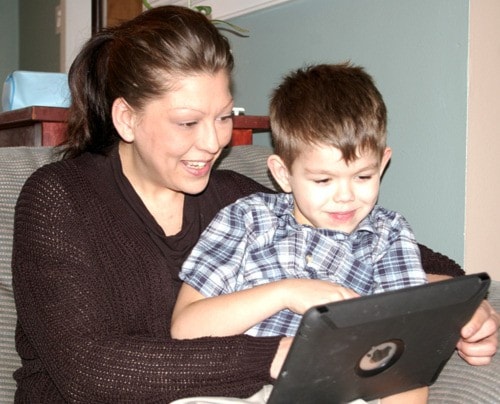Tristan Tuokko is your average four-year-old boy in almost every respect.
He loves to do active things like riding his bicycle and playing baseball, plays video games and tries to do everything for himself without getting any help from mom.
But the difference is apparent when Tristan starts talking. Some of the words are recognizable; others not.
“Sometimes it’s just complete jargon, it’s babble,” said Dawn Tuokko, Tristan’s mom.
At age two, Tristan was diagnosed with childhood apraxia of speech, a motor speech disorder in which the child has trouble saying what he or she wants to say correctly and consistently.
Childhood apraxia of speech is present from birth – at 18 months, a public health nurse encouraged Tuokko to take her son to a speech language pathologist because Tristan was not making any sounds she could recognize – and the cause or causes are unknown.
The problem is not weak muscles in the mouth; the brain has difficulty planning and producing the series of movements of the tongue, lips, jaw and palate that are necessary for intelligible speech.
“His brain knows everything – his mouth can’t say it,” said Tuokko.
As a result, Tristan has problems with sounds, syllables and general words. His words sometimes come out garbled – “yoking” instead of “joking” – or completely unintelligible.
Intensive intervention is required and Tristan sees a speech-language pathologist with the Vancouver Island Health Authority once a week, who assigns work for Tuokko to do with her son at home every day.
But she struggled to get her son interested in the work and the family cannot afford to get him any extra help.
Last year, Tuokko came across the Childhood Apraxia of Speech Association of North America’s iPads for Apraxia project, which gave out 75 iPads last fall. The family was one of the program’s successful applicants and Tristan received his iPad just before Christmas.
Since Tristan started using the device, which has about 10 different speech development programs on it, she’s noticed an improvement in his communication skills, largely because he has been more willing to sit down with her and do an hour of work each day.
She also worries less about sending him to kindergarten next year because the iPad has a program that will help him communicate with others when he is struggling.
To show thanks and help bring the iPad program to other families, Tuokko wants to organize a fundraising walk in July for the non-profit, U.S.-based association and she is looking for other families dealing with apraxia in the community, individuals willing to help organize the walk and corporate sponsorships and donations.
Anyone interested in helping out or simply connecting with Tuokko can e-mail her at citydawn@shaw.ca.
Kathy Armstrong, speech and language therapy department leader at the Nanaimo Child Development Centre, said children never outgrow apraxia of speech, but it does improve as they get older with treatment and anything that motivates them to work on their speech is positive.
“Anything that helps motivate a child to practise speech sounds is great,” she said.
